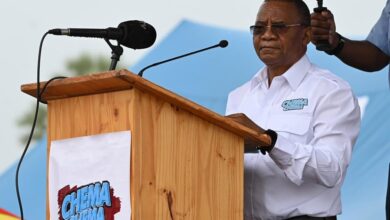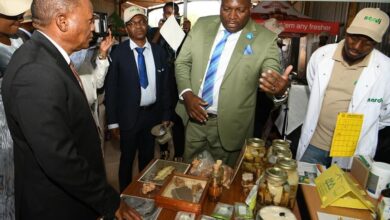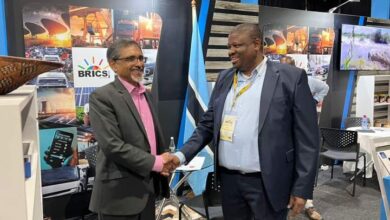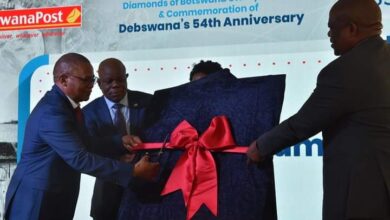Top 10 Investment Opportunities In Botswana
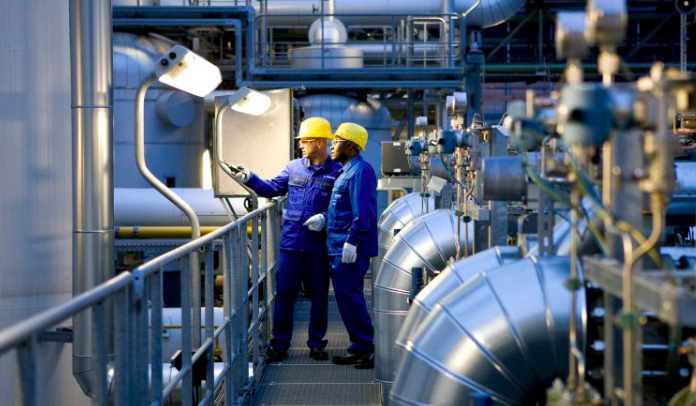
Botswana is a hive of opportunities for investors locally and internationally. With a population of over 2,292 million and a GDP of $44.3 billion, Botswana has seen investments from blue chip companies looking into a piece of our nation’s pie. See Top 10 Investment Opportunities In Botswana
Tourism
Botswana is well known for having some of the best wilderness and wildlife areas on the African continent. With a full 38 percent of its total land area devoted to national parks, reserves and wildlife management areas – for the most part unfenced, allowing animals to roam wild and free – travel through many parts of the country has the feeling of moving through an immense Nature wonderland.
Botswana is a rarity in our overpopulated, over-developed world. Untamed and untameable, it is one of the last great refuges for Nature’s magnificent pageantry of life.
Experience here the stunning beauty of the world’s largest intact inland Delta – the Okavango; the unimaginable vastness of the world’s second largest game reserve – the Central Kalahari Game Reserve; the isolation and other-worldliness of the Makgadikgadi – uninhabited pans the size of Portugal; and the astoundingly prolific wildlife of the Chobe National Park.
Botswana is the last stronghold for a number of endangered bird and mammal species, including Wild Dog, Cheetah, Brown Hyena, Cape Vulture, Wattled Crane, Kori Bustard, and Pel’s Fishing Owl. This makes your safari experience even more memorable, and at times you will feel simply surrounded by wild animals.
The first – and most lasting impressions – will be of vast expanses of uninhabited wilderness stretching from horizon to horizon, the sensation of limitless space, astoundingly rich wildlife and bird viewing, night skies littered with stars and heavenly bodies of an unimaginable brilliance, and stunning sunsets of unearthly beauty.
As well, with more and more cultural tourism options on offer, you will be charmed by the people of Botswana, visiting their villages and experiencing first-hand their rich cultural heritage. But perhaps most of all, Botswana’s greatest gift is its ability to put us in touch with our natural selves. It offers that vital link so keenly felt by inhabitants of the developed world, a pervasive void we feel but often cannot name – our connectedness with Nature and the astonishing diversity of plants and animals to be explored.
Mining
Opportunities for investment in the mining sector include; prospecting and surveys, expansion of existing mining projects, new mining projects, beneficiation of minerals and improved value chain benefits. The beneficiation of diamonds represents one of the most promising areas of opportunity. The Botswana Diamond Hub was established to develop a sustainable secondary diamond industry in Botswana. To facilitate the establishment of diamond ancillary businesses, 28 licensed cutting and polishing companies are in operation, mainly centred in Gaborone. The potential exists to expand operations to other parts of the country.
Agriculture
Botswana is a Net Food Importing Developing Country (NFIDC) the opportunity to increase domestic production of basic foodstuffs, particularly cereals (grain sorghum and maize) and pulses. Cereal national demand stands at 200 000 tons per year, of which only 17% is supplied through local production. Investments in arable agriculture will; stimulate private sector development, create employment, create value-addition opportunities, and enhance food security and ultimately exports.
The Pandamatenga agricultural Infrastructure development project, located in an area receiving the highest average annual rainfall, could create spin-offs in sunflower processing instead of exporting sunflower production for processing. The Zambezi Agro-commercial Development Project presents another investment opportunity. The Zambezi River will supply irrigation to will help increase 20 000 hectares of agricultural development.
Automotive
As one of the most affluent economies in Southern Africa with a robust growth outlook, Botswana is home to a growing automotive market. It has a vehicle ownership rate of 206 vehicles per 1,000 people which is far above the African average of 43 vehicles per 1,000 people. Botswana’s automotive market is expected to receive a boost in terms of sales growth in the short to medium term due to the development of domestic coal deposits and the unlocking of agricultural opportunities.
Cargo Freight and Logistics
Centrally located in SADC, Botswana offers landlinked access to seven fast-growing markets and serves as the perfect location to leverage regional trade growth, with intraregional transport volumes expected to more than double within the next two decades. According to the World Economic Forum, Botswana has the best landlocked infrastructure in Africa and the third best logistics operating environment in the region.
It provides an alternative route to SADC’s other highly congested corridors, such as the route from South Africa through Zimbabwe and further north to Zambia and the Democratic Republic of the Congo (DRC), and is able to leverage favourable port, rail and road infrastructure in neighbouring South Africa and Namibia. Botswana has committed significant investment to develop new and revitalise existing transport corridors making use of road, rail, airports, dry ports and one-stop border posts. Worthy of note is the P1.4 billion Kazungula Bridge Project linking Botswana and Zambia and opening up possibilities of accessing SADC further up by road.
Education
The education sector receives the largest share of total government expenditure. Recurrent expenditure on education averaged 28% of the total in the three years to 2009/10. Investment in education continues to be a priority even in the current planning period, NDP 10, in order to achieve the aspirations of Botswana’s Vision 2016.
Over the past 10 years, 2000 – 2010, almost 110 500 students were sponsored by government, nearly 20% of whom were placed in foreign institutions. The highest peak was observed during 2007 and 2008 with between 15 000 and 20 000 students placed in both local and foreign institutions. Since 2000 there has been a gradual decline in the number of placements in foreign institutions, resulting in 5% and 4% respectively for 2009 and 2010.
Energy
Botswana has limited exploitable energy resources and currently relies on imports of electricity and all petroleum products. The price of connection to the national grid is a flat rate charge of P5000. The total number of villages electrified as of October 2010 is 344 villages out of a total of 462 (Department of Energy Affairs).
Botswana’s available energy resources include coal, solar and bio-energy (biomass and bio-fuels).
Financial and Business Services
International Business Companies (IBCs) present the most immediate potential for growth in Africa from an IFSC platform. IBCs cut across sectors and operate in several sub – Saharan countries and are typically Investment Companies or Regional Headquarters operations.
Health
The Botswana healthcare system is comprised of both Government (Public) and Private Sector service providers. Public Sector healthcare services are provided free or for a minimal fee to citizens and foreign nationals pay reasonable subsidized fees. Healthcare delivery is decentralised with an extensive network of primary healthcare facilities: hospitals, clinics, health posts and mobile stops.
A 450 bed Medical Teaching Hospital is expected to open in 2014/15 encompassing both undergraduate and post graduate studies, healthcare and research. It is hoped that this will improve quality of healthcare through highly trained personnel.
Partnership with international institutions and organizations is expected to strengthen the health care system and improve quality of care.
ICT
According to the 2011 ICT Statistics Report, the ICT industry is growing; particularly in mobile cellular services, which outpaces the development of fixed telephone lines and internet service provision. The number of mobile subscribers has increased from 106,029 in 2000 to 2,900,263 in 2011; a 2,635% growth. According to the report, Mobidensity (the number of mobile cellular subscriptions per 100 inhabitants) has increased by over 1000% percent from 13 subscriptions in 2000 to 143 subscriptions in 2011, (see table below). The ICT sector in Botswana also includes postal services, print media and radio and television.
Leather and Leather goods
Botswana has an abundance of raw hides and skins locally. The country has an annual national herd size of 2.5-3.3 million cattle; with an average off-take ratio of 9% estimated only through the Botswana Meat Commission (BMC) annual throughput, yielding 200,000-300,000 hides per year. As middle income populations in emerging markets grow, so too does the global demand for leather products. With a small number of micro businesses and artisanal enterprises operating as tanneries, hide collectors and leather product manufacturers, Botswana is in the process of creating a vibrant leather cluster which will kick start with the development of a leather park in Lobatse.
Manufacturing
The need to develop a diversified and robust manufacturing sector is a key agenda in government efforts to identify potential growth areas beyond the exploitation of its mineral wealth, which has been central to its transformation into a middle-income country, but which at the same time makes it susceptible to the vagaries of a fickle global economic order. Opportunities presented by the manufacturing sector covers a wide array of sectors such as food and beverages, textiles and garments, jewellery making, metal and metal products amongst others. At a national level, these opportunities are presented through the country’s high import bill, which has led to the government to develop complementary policies (Economic Diversification Drive) to promote the sector. Below are some of the salient features of the manufacturing sector in Botswana:

